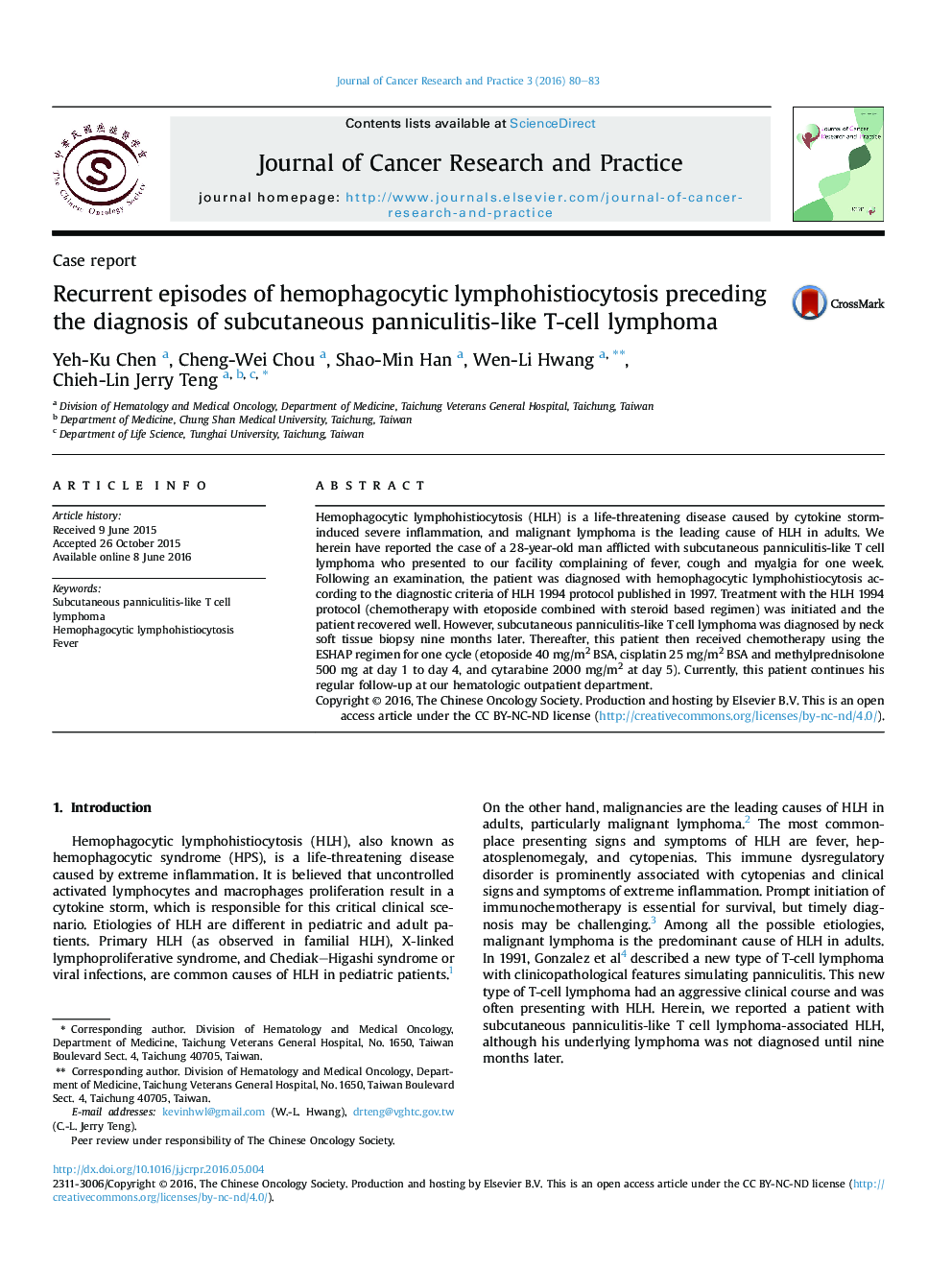| Article ID | Journal | Published Year | Pages | File Type |
|---|---|---|---|---|
| 3988764 | Journal of Cancer Research and Practice | 2016 | 4 Pages |
Hemophagocytic lymphohistiocytosis (HLH) is a life-threatening disease caused by cytokine storm-induced severe inflammation, and malignant lymphoma is the leading cause of HLH in adults. We herein have reported the case of a 28-year-old man afflicted with subcutaneous panniculitis-like T cell lymphoma who presented to our facility complaining of fever, cough and myalgia for one week. Following an examination, the patient was diagnosed with hemophagocytic lymphohistiocytosis according to the diagnostic criteria of HLH 1994 protocol published in 1997. Treatment with the HLH 1994 protocol (chemotherapy with etoposide combined with steroid based regimen) was initiated and the patient recovered well. However, subcutaneous panniculitis-like T cell lymphoma was diagnosed by neck soft tissue biopsy nine months later. Thereafter, this patient then received chemotherapy using the ESHAP regimen for one cycle (etoposide 40 mg/m2 BSA, cisplatin 25 mg/m2 BSA and methylprednisolone 500 mg at day 1 to day 4, and cytarabine 2000 mg/m2 at day 5). Currently, this patient continues his regular follow-up at our hematologic outpatient department.
